Resources for Learning at Home
Enjoy nature at home with these online learning experiences brought to you by the Science Center’s Naturalists. These will be updated regularly and include:
- New Hampshire Neature
- Nature Journals
- Mystery Photos
- 50 Nature Activities for Kids
- Activities from Blue Heron School
- Virtually Wild School Programs
- NatureWorks
New Hampshire Neature
Episode 1: Signs of Spring
Episode 2: Mud Madness
Episode 3: Silence
Episode 4: Troubles with Voles
Episode 5: Salamanders and Wood Frogs
Episode 6: The Great Spring Flower Search
Episode 7: Out in Nature... and Lichen It!
Episode 7: Out in Nature... and Lichen It!
Neature Break: Favorite Things
Episode 8: Streaming Live
Neature Break: Wildflowers
Episode 9: Night Light
Episode 10: Blueberries for Vern
Episode 11: Summer Wildflower Bonanza
Nature Journal Pages
Get your students and children outside by engaging them in nature journaling. These journal pages include directions so that parents can easily do the activities with younger children and older children can do them on their own. The only materials needed are the journal page and something to write with. You can complete one journal page or complete them all and compile them into your own nature journal.
Nature Journal Pages
- Nature Journal Cover Page
- Nature Journal Bark Rubbings
- Nature Journal Blind Contour Drawing
- Nature Journal Descriptive Drawing
- Nature Journal Frozen Frogs
- Nature Journal Leaf Rubbings
- Nature Journal Log Looking
- Nature Journal Making Observations
- Nature Journal Meet a Tree
- Nature Journal Paint with Nature
- Nature Journal Sound Map
- Nature Journal Spring Scavenger Hunt
- Nature Journal Winter Scavenger Hunt
Mystery Photo Series
We post a mystery photo each Tuesday and ask you to tell us what you think the picture shows. On Wednesdays we tell you what the picture is and a little bit about that animal.
Week of September 8

Mystery Photo answer:The pelt pictured is from a gray fox! Gray foxes are highly omnivorous, but are more active hunters than their red cousins. They regularly hunt cottontail rabbits, as well as voles and shrews. They are also some of the best climbers in the canine world, and are the only climbing fox. Thanks to their ability to climb and hop from branch to branch, gray foxes are able to escape predators and forage in trees. They can be found throughout the northeast, south, and far west parts of the United States.
Week of September 1

Mystery Photo answer:Pictured is the inside of the shell of a snapping turtle. Clearly turtles can't move out of their shells and find new ones. As you can see, the shell of a turtle is part of its spine and it grows with the turtle for its entire life. Snapping turtles can be easily distinguished from other turtles by their long tail, large size, and jagged hind shell. They feed primarily on small fish, amphibians, and aquatic invertebrates but will also eat plants. They are often seen in ponds sitting very still, usually with their head poking above the water. This is to camouflage themselves, so small animals will swim by and the turtle can stick its neck out and snap its powerful jaws to catch its prey. Common snapping turtles can be found throughout all of the eastern United States into the midwest, as well as parts of central America.
Week of August 25

Mystery Photo answer:The picture shows the tail of a North American beaver! Known for building dams, beavers can change their habitats greatly creating new habitats for themselves, fish and waterfowl. The introduction or removal of a beaver dam can have far-reaching and long lasting impacts to the surrounding area, making beavers a particularly important species. Their tails are a unique and versatile adaptation. Beaver tails are used as rudders when swimming, help with balance on land, and slap against the surface of water for an alarm call. Beavers are highly aquatic rodents; they are extremely strong swimmers and can hold their breath for up to 15 minutes if necessary.
Week of August 11
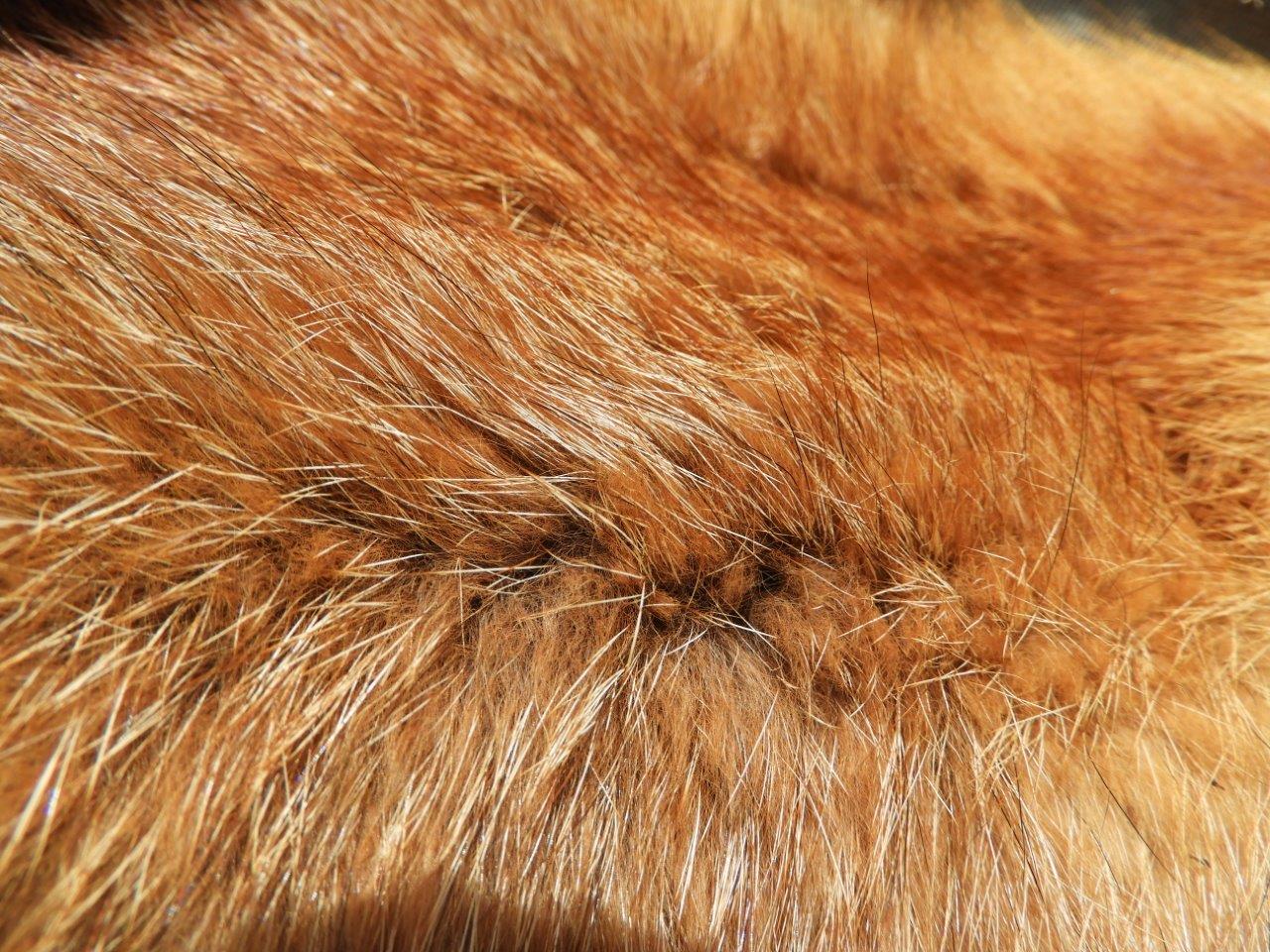
Mystery Photo answer:The pelt pictured was from a red fox! The red fox is the largest true fox in North America, and are found throughout nearly all of North America, Asia, Europe, and parts of Australia. They are more carnivorous than most other foxes feeding primarily on invertebrates like crayfish, and insects, as well as small birds and mammals. However, they are omnivorous and will eat plenty of fruit and seeds too. While most of their canine cousins are highly social pack animals, red foxes are typically solitary and only come together to mate around February. They also secrete a strong skunk like smell to mark their territories.
Week of August 4
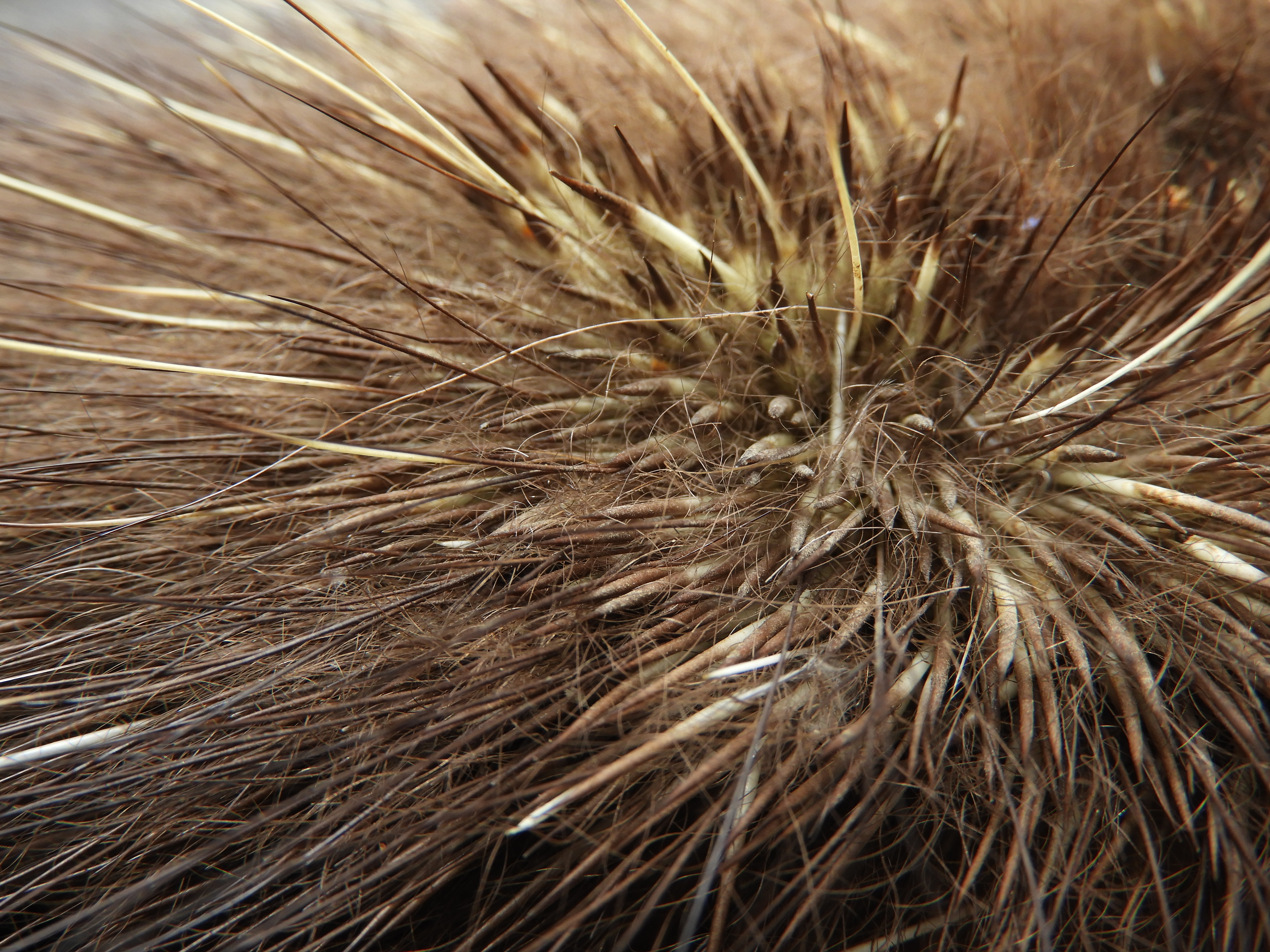
Mystery Photo answer:The pelt pictured was from the North American Porcupine, or it's latin name: Erethizon dorsatum, which means "one with the irritable back." Porcupines are known for their great defensive adaptation: their quills. North American porcupines are covered in tens of thousands of quills, which is just one of their five types of specialized fur. Because it is a type of modified fur, contrary to popular belief, porcupines cannot actually shoot their quills. Instead they become dislodged after something physically makes contact with the back of the porcupine. Only one animal we know of has been able to consistently prey on porcupine: the Fisher. Fishers have learned to attack porcupines from their underside where there are no quills!
Week of July 28

Mystery Photo answer:The skull pictured was from a North American river otter! The river otter has many adaptations that allow it to live as the most aquatic member of the mustelid family. Their webbed feet and slender body shape allow river otters to be excellent swimmers. They have one of the most dense coats in the animal kingdom, with over 50,000 hairs/ sq cm! This dense, oiled fur allows river otters to remain relatively warm and dry even in water. Their diet primarily consists of fish, frogs, crayfish, and eggs from reptiles or birds.
Week of July 14
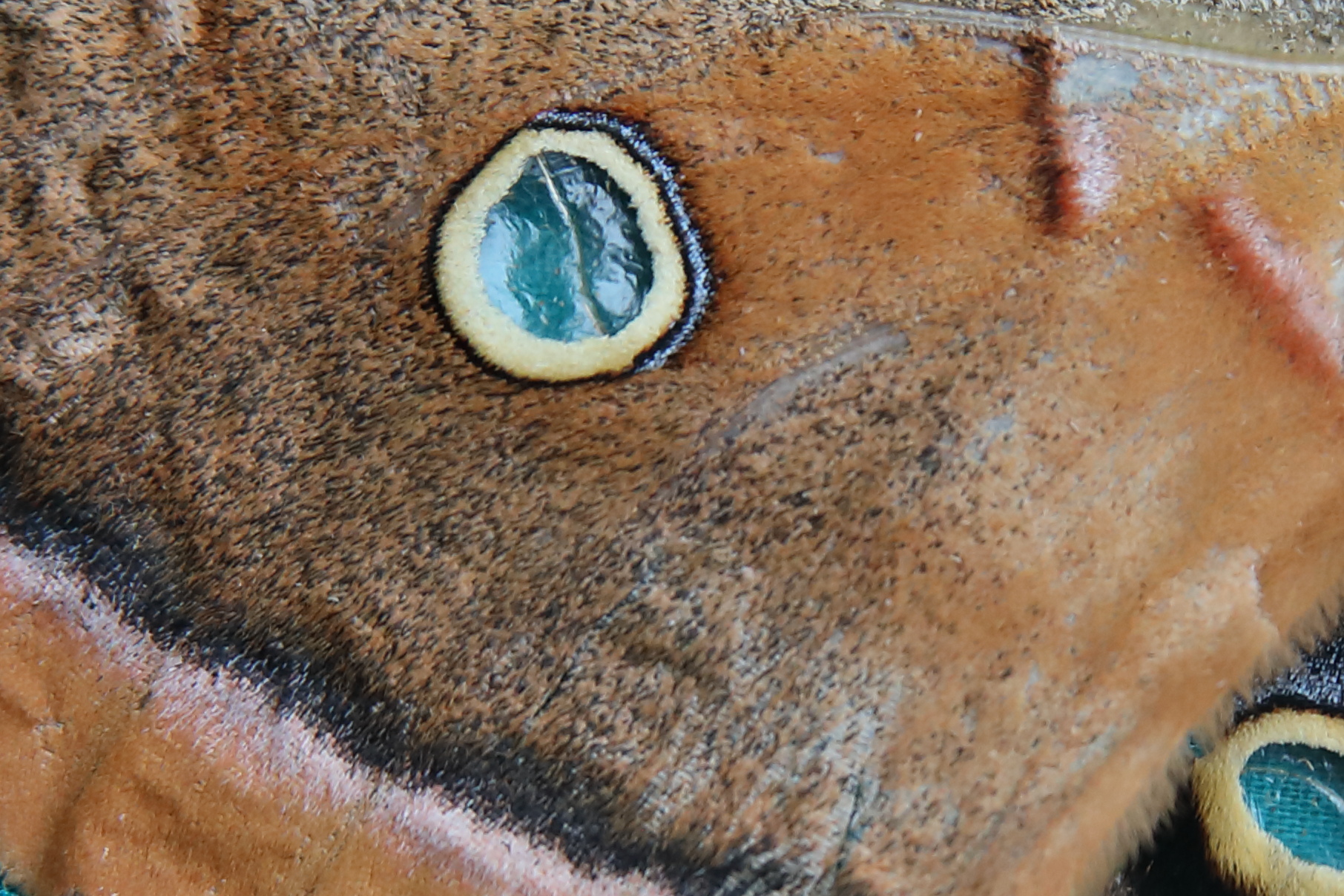
Mystery Photo answer:The photo shows the wing of a Polyphemus moth. These moths are some of the largest in New Hampshire, reaching wingspans of up to 6 inches! They are named for the two large spots on their hind wings representing eyes, much like the Greek god Polyphemus: the cyclops. Both males and females have the distinct "eye spot" but are differentiated by their antenna shape; males have significantly wider antennae. Their caterpillars are common food sources for a variety of insects, as well as larger mammals such as raccoons and squirrels.
Week of July 7
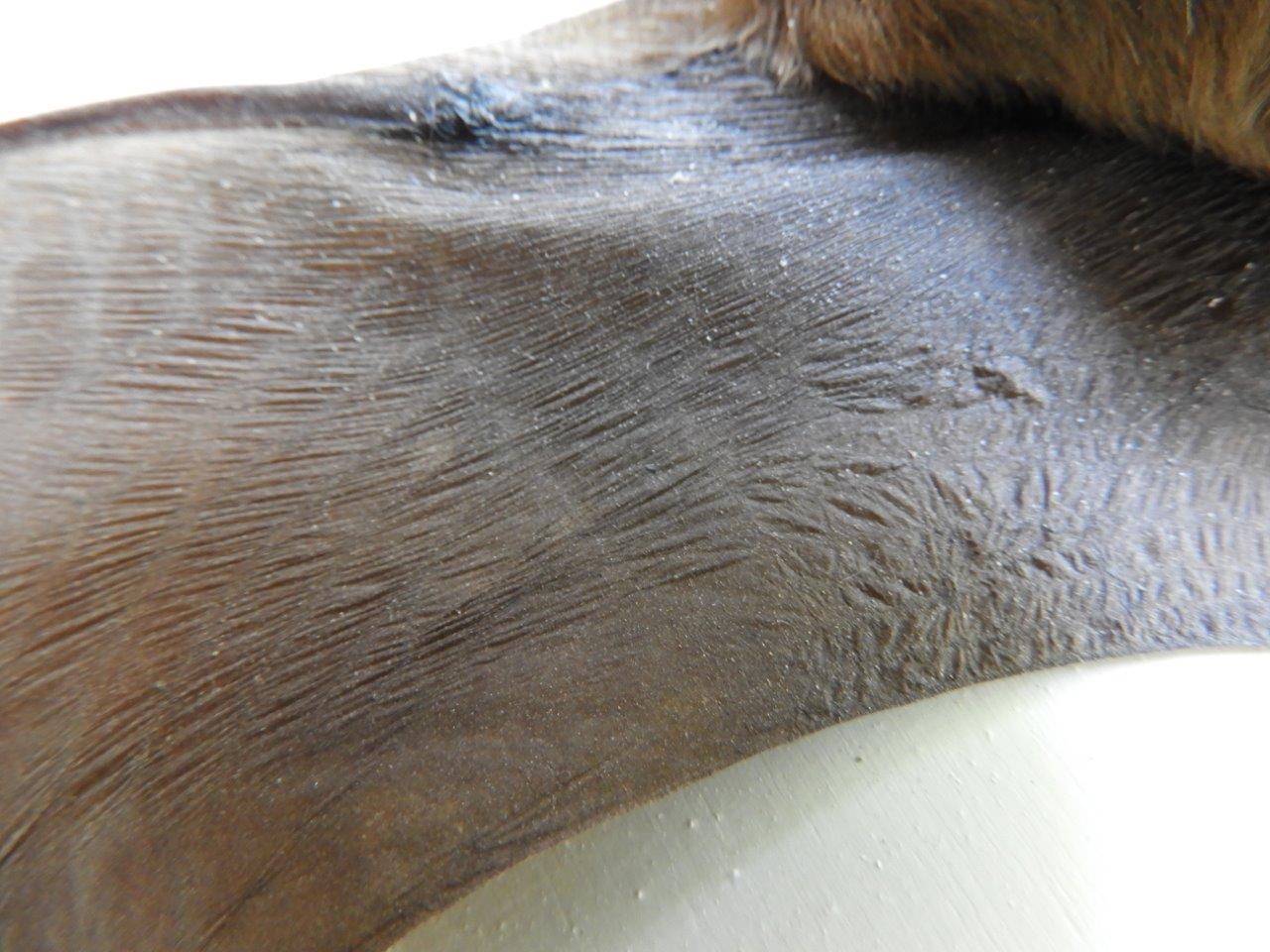
Mystery Photo answer:The picture is the wing of a little brown bat! Once the most common bat in New Hampshire, the little brown bat is one of the best mosquito hunters in the sky. Using echolocation these bats can catch up to 1,000 insects per hour! The bat family (chiropterans) has 1,400 species, or 25% of all mammal species worldwide. These bats greatly help humans with pest control; it is estimated that bats provide up to 50 billion dollars per year of insect control, saving our crops. Unfortunately, there has been a sharp decline in little brown bats due to white nose syndrome: a fungal disease that may have depleted up to 99% of the little brown bat population. So, if you've noticed more mosquitoes in the past few summers, you are absolutely correct!
Week of June 30

Mystery Photo answer:The skull pictured is from the fastest animal in the world: the Peregrine Falcon. Well adapted for bird hunting, the Peregrine’s aerodynamic wings and body shape allow it to go in to a dive or a "stoop," where it reaches speeds of over 200 mph! Peregrine Falcons experienced a population decline because of the use of DDT as a pesticide in the 1960s and 1970s. However, since DDT was banned, peregrine populations have been steadily improving and now have a conservation status of "least concern." Their rebound is a true conservation success story!
Week of June 23

Mystery Photo answer:Who cooks for you? Who cooks for you all? The wing pictured is from a Barred Owl. New Hampshire's most common owl, the Barred Owl gets its name for the horizontal bars across their chest. These bars, along with the distinct dark brown eyes give them great camouflage in a forest community. Like all owls, they also have the ability to turn their heads around 270 degrees. Birds have twice as many bones in their neck as mammals, which allows for this great flexibility. They need to be able to turn their heads so far around to make up for the fact that their eyes are SO big they are fixed to their skull and cannot move independently.
Week of June 16

Mystery Photo answer:The wing is from an American Kestrel. We made it especially difficult because we showed the underside of the wing. Formerly called "sparrow hawks," American Kestrels are a small species in the falcon family. Kestrels primarily live in field communities and feed on small mammals, reptiles, amphibians, and invertebrates. They have a unique way of spotting rodents in an open field: by following their urine. Rodents will often urinate to mark their territory, and these spots reflect ultraviolet light from the sun. Kestrels are one of the few raptors known to have the ability to see this spectrum of UV light.
Week of June 9

Mystery Photo answer:The skull is from an American mink! The mink is one of the most aquatic members of the mustelid family, behind the otter. They also often dig complex tunnels and are great climbers. Like all other mustelids, mink are carnivorous; their primary diet consists of small rodents, amphibians, invertebrates like crayfish and some small birds. Mink are highly intelligent, curious animals with a ton of energy!
Week of June 2
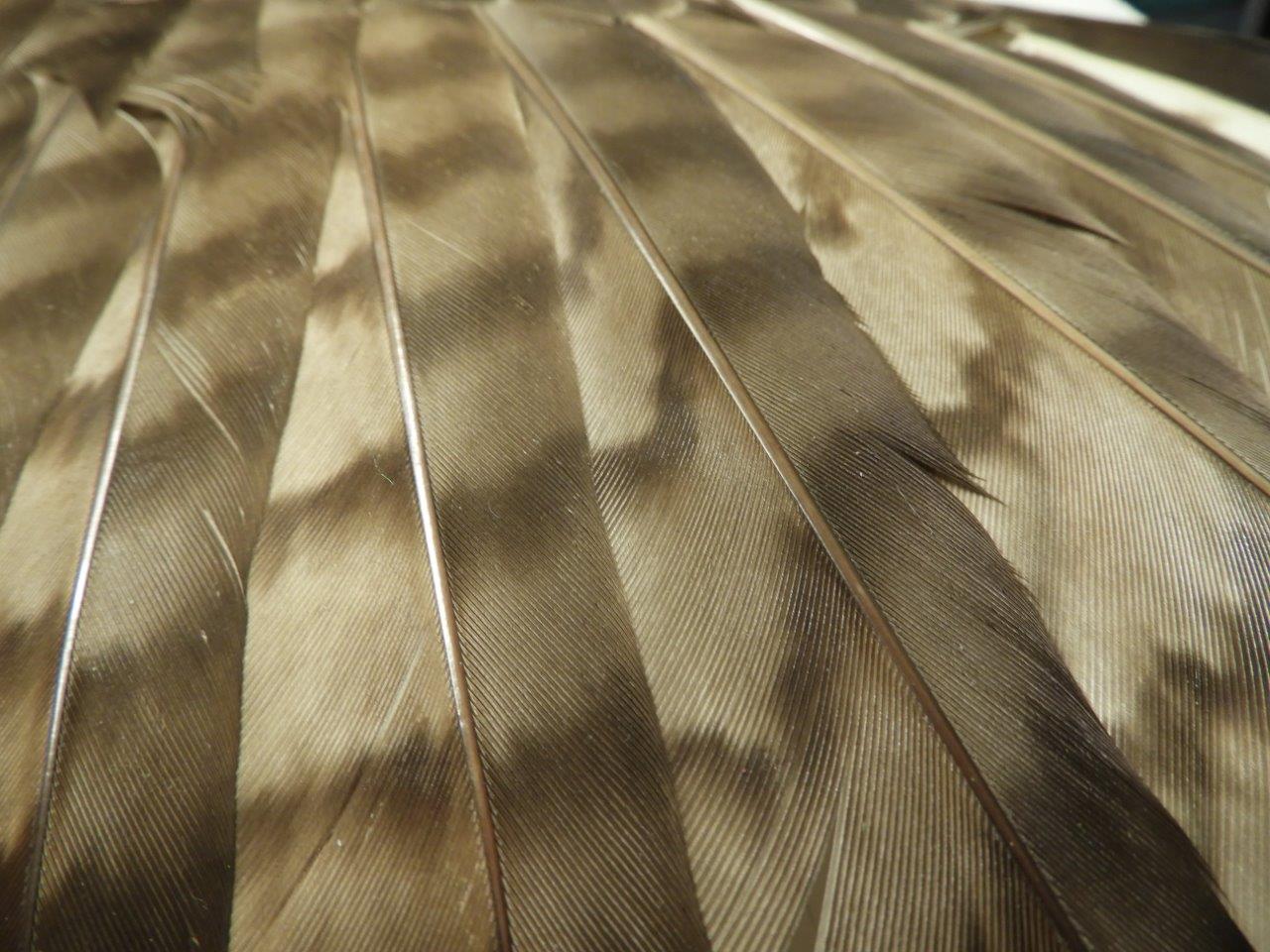
Mystery Photo answer:The photo shows the wing of a Red-tailed Hawk. One of the most common raptors in New Hampshire, Red-tailed Hawks are strong birds that live primarily in open fields. They feed on small-medium mammals, but are known to eat snakes and smaller birds too. Adults are identified by a dark stripe along the outer wing, and their reddish rust color tails. Juveniles look quite different, with a darker underside and dark brown tail feathers. The red tail doesn’t develop until as late as 18 months old!
Week of May 26
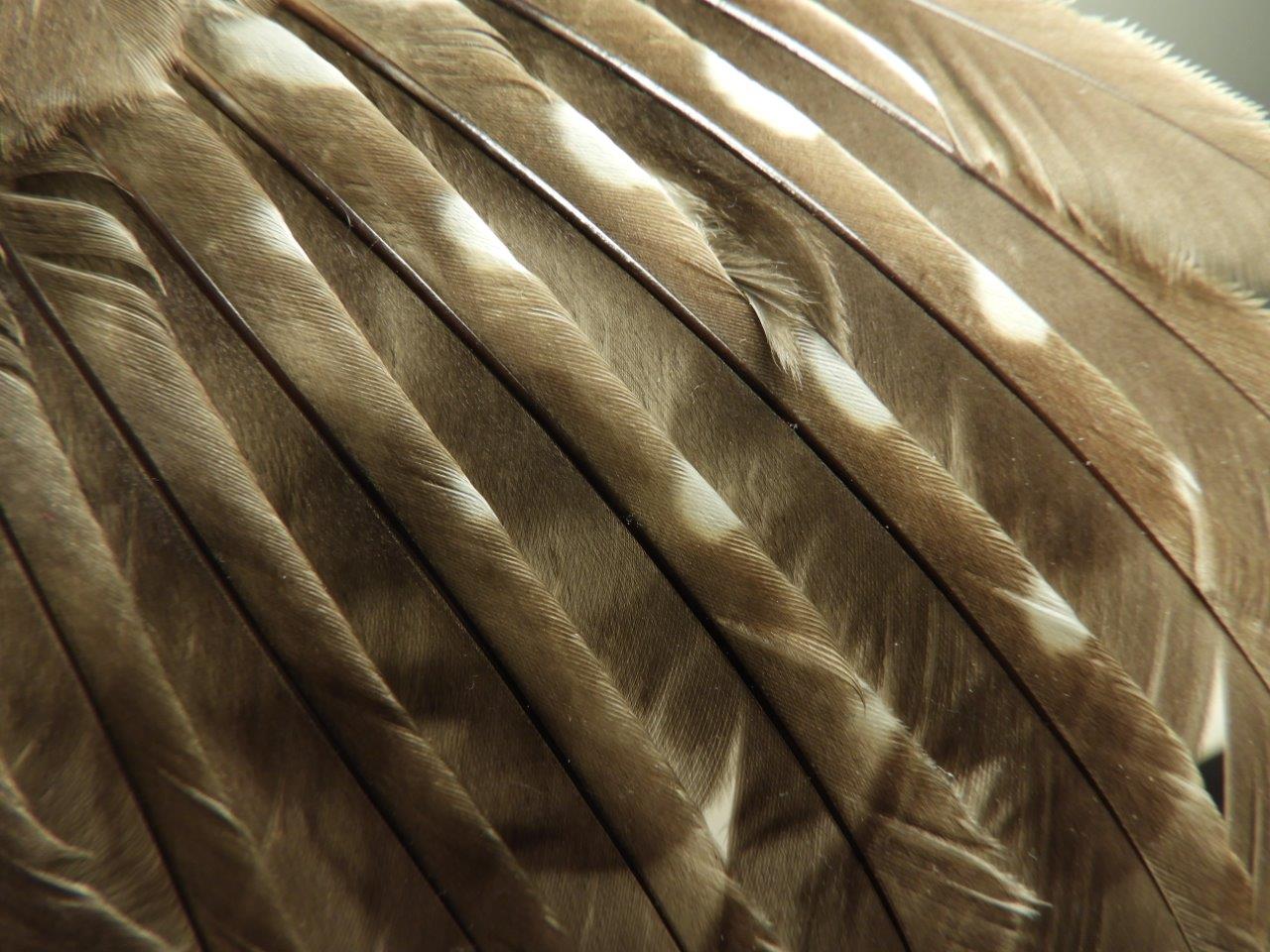
Mystery Photo answer:The photo shows the wing of a northern Saw-whet Owl! The Saw-whet Owl is the smallest owl found in New Hampshire. When they are full grown, they're about the size of a lemon! Although small, they are still great predators of small mammals and invertebrates. Like all owls, they primarily rely on their sensitive hearing to find their prey. The ears of the Saw-whet are slightly asymmetrical, which allows them to pinpoint the location of prey. Even from a tree 30 feet tall, they can still hear a mouse tunneling underneath a foot of snow on the ground!
Week of May 19
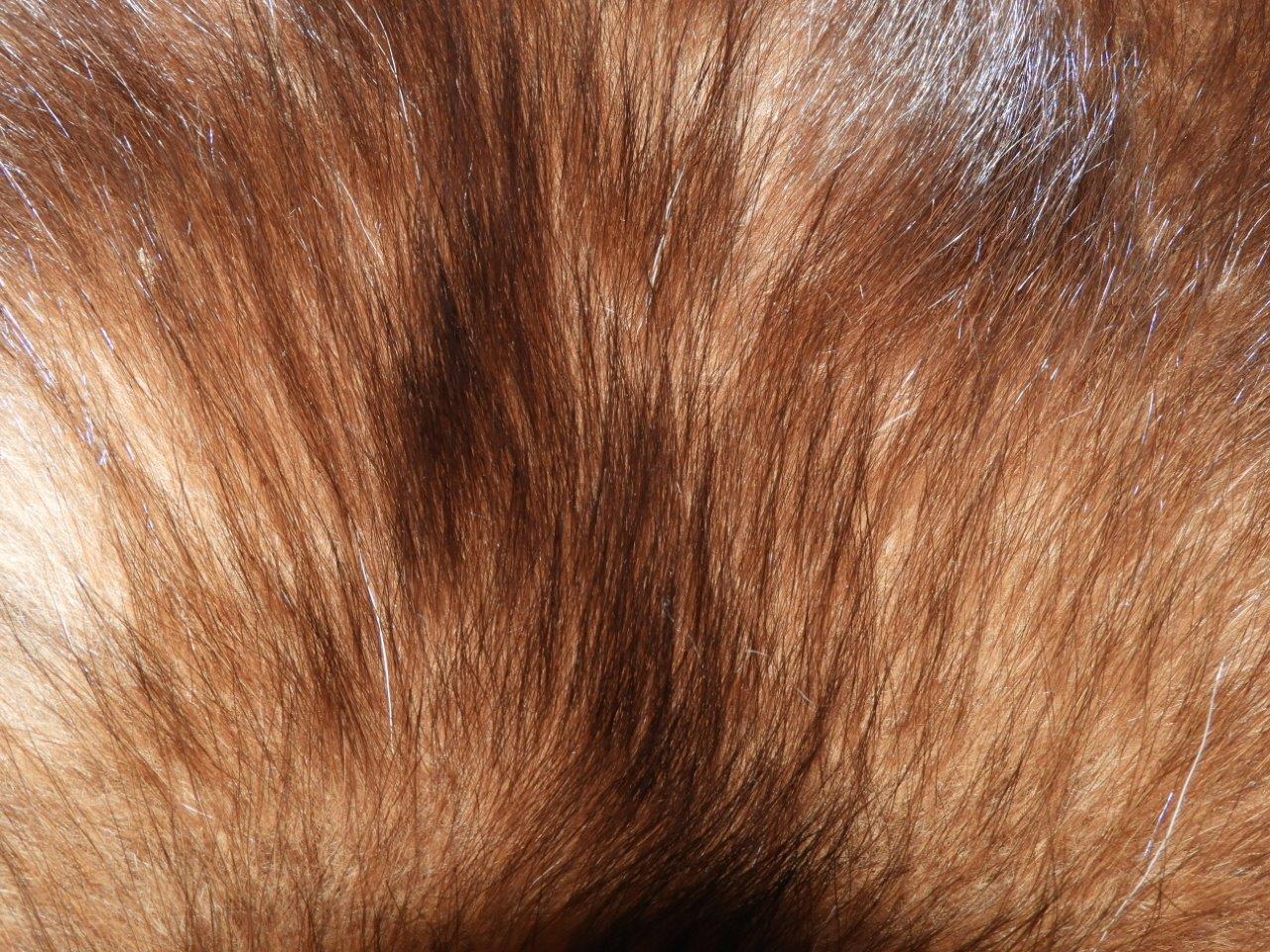
Mystery Photo answer:The photo shows the pelt of a fisher. Commonly called "fisher cats," fishers are members of the mustelid family, making them related to weasels, otters, mink, and badgers. Mustelids are characterized by their elongated bodies, very thick fur, and scent glands that give them a distinct smell. Fishers will mostly feed on small mammals, and some birds and invertebrates. They are also the primary predator of porcupines.
Week of May 12
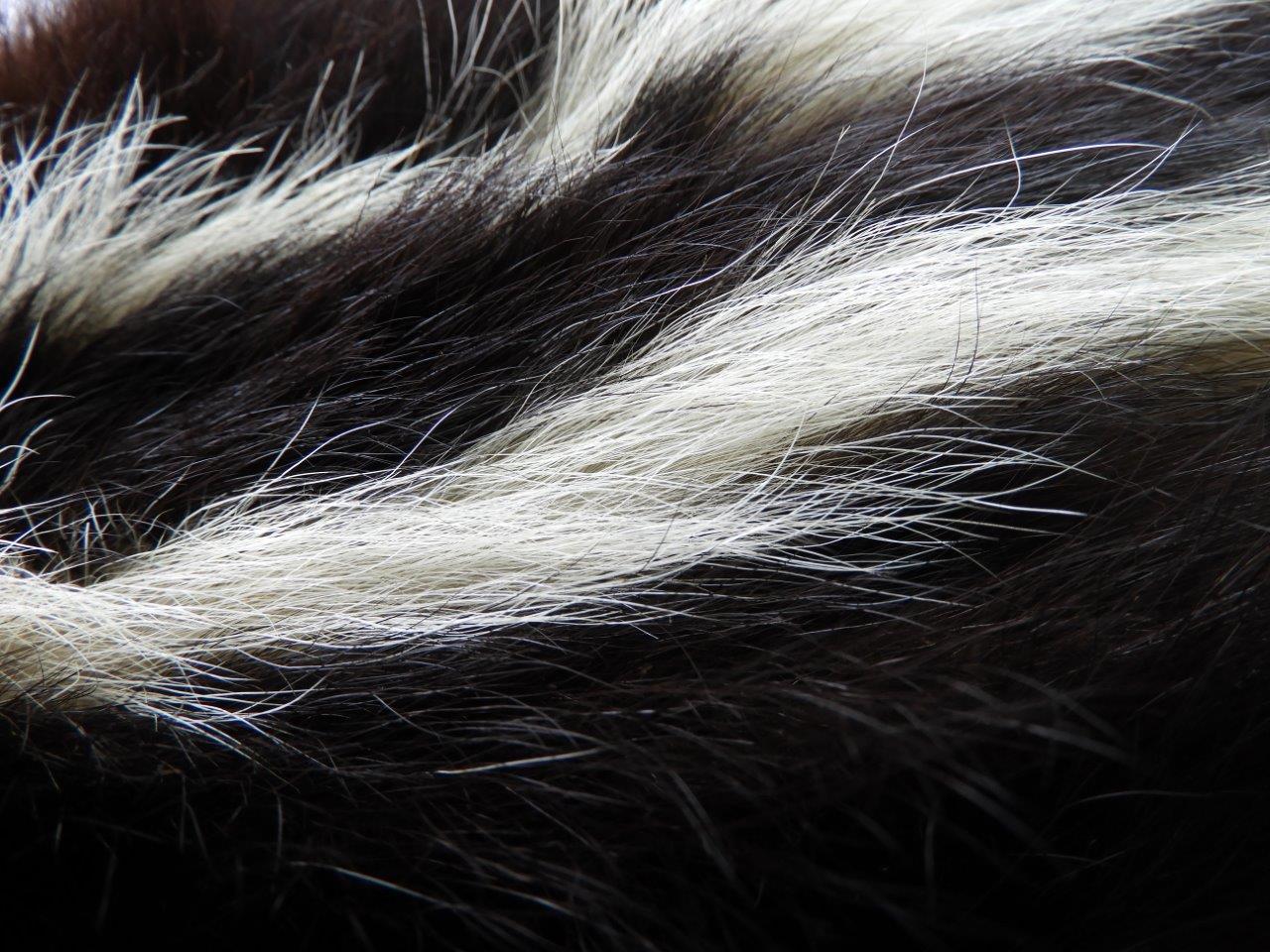
Mystery Photo answer:The photo shows the pelt of a striped skunk! This fur can be easily identified by the white and black stripes. In the animal world, bright or contrasting colors (like black and white) tell the animals around it is probably a bad idea to try to eat this animal. In the case of the skunk, it tells the surrounding wildlife "look out, I stink, and if you come near me you'll stink too!" Skunks are versatile, resourceful animals, typically living on the border between two habitats (an ecotone) and eating a great variety of fruits, insects, and carrion.
Week of May 5

Mystery Photo answer:The fur pictured belongs to one of the most unique New Hampshire animals: the opossum. The opossum has a pouch where babies are fed and develop, making it North America's only marsupial. They will eat a great variety of fruits, vegetables, carrion, and insects using their mouth full of fifty teeth, which is more than any other North American mammal. They are also great climbers thanks to their opposable thumbs and furless prehensile tail. Because of all these fascinating adaptations, opossums have survived and roamed since the dinosaurs!
Week of April 28
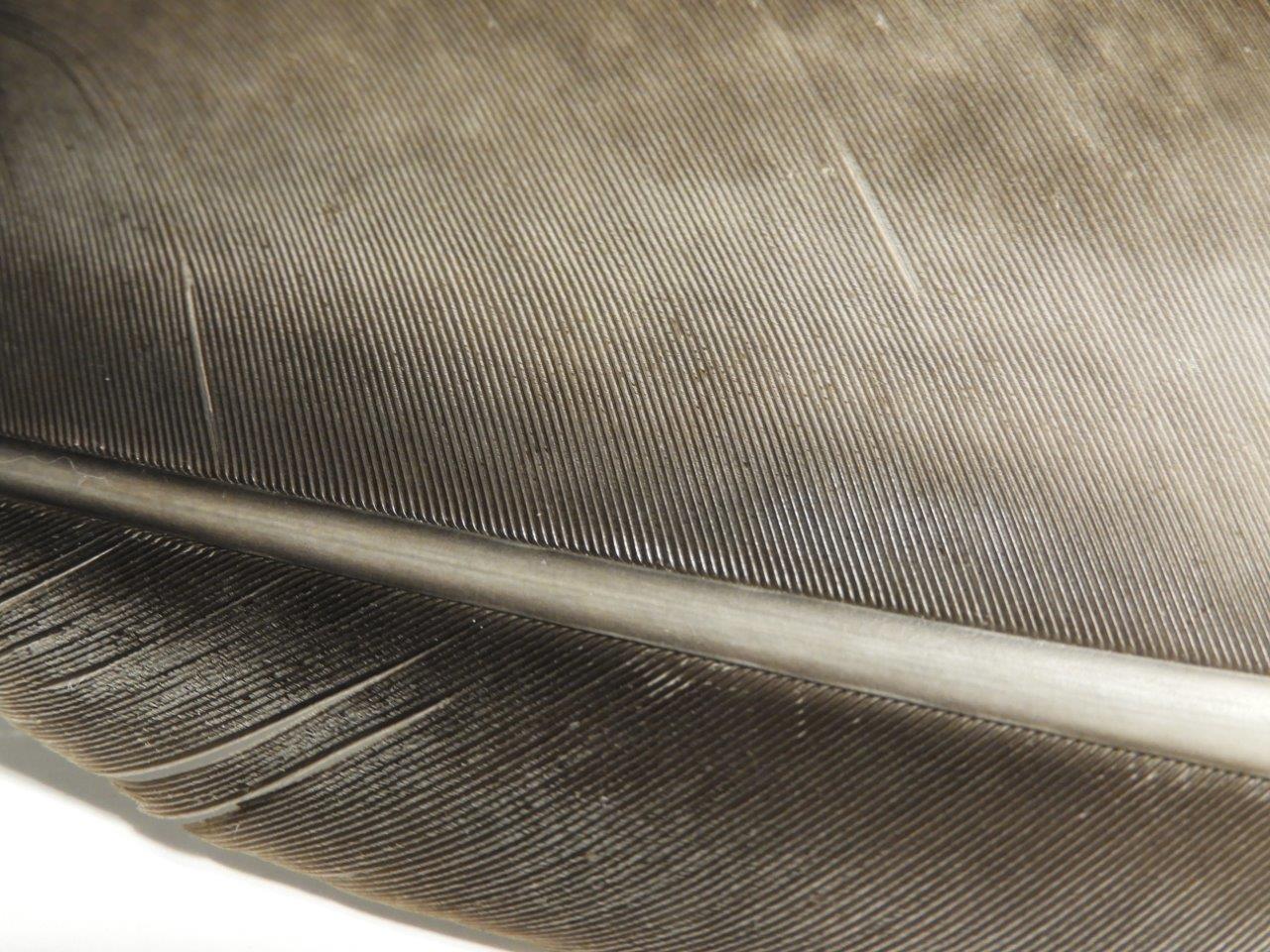
Mystery Photo answer:The photos show a feather from the wing of a Turkey Vulture! An essential part of natures’ clean-up crew, Turkey Vultures eat almost exclusively carrion (already dead things.) To find this carrion, Turkey Vultures will soar through the air with their large wings and, unlike most other birds, use their strong sense of smell to find carrion. Their black feathers are great at absorbing UV rays from the sun to help thermoregulate their bodies. Keep an eye out for Turkey Vultures perched on trees or telephone poles with their wings spread out catching some rays!
Week of April 21
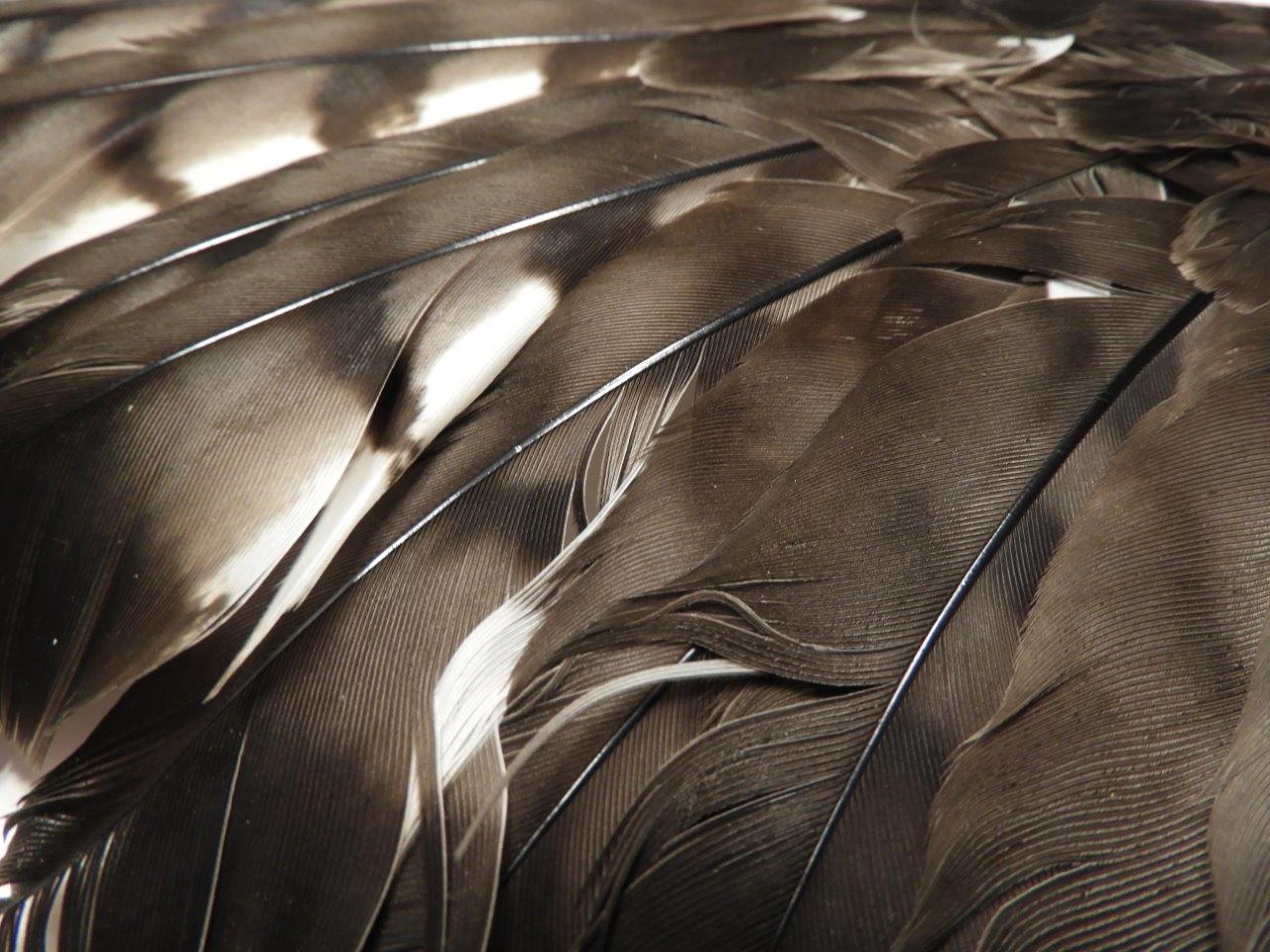
Mystery Photo answer:The photo shows a Broad-winged Hawk. These hawks are one of New Hampshire's most adept migratory birds. They leave for their 4,400 mile journey to South America in September, flying nearly 70 miles per day for 2 months, returning in late April. To save energy, they take advantage of natural "elevators" called thermals, or large columns of warm air. Keep an eye out this week for large groups of birds flying in circles. It is likely a kettle (or group) of Broad-wings riding these thermals on their way back from South America!
Week of April 14
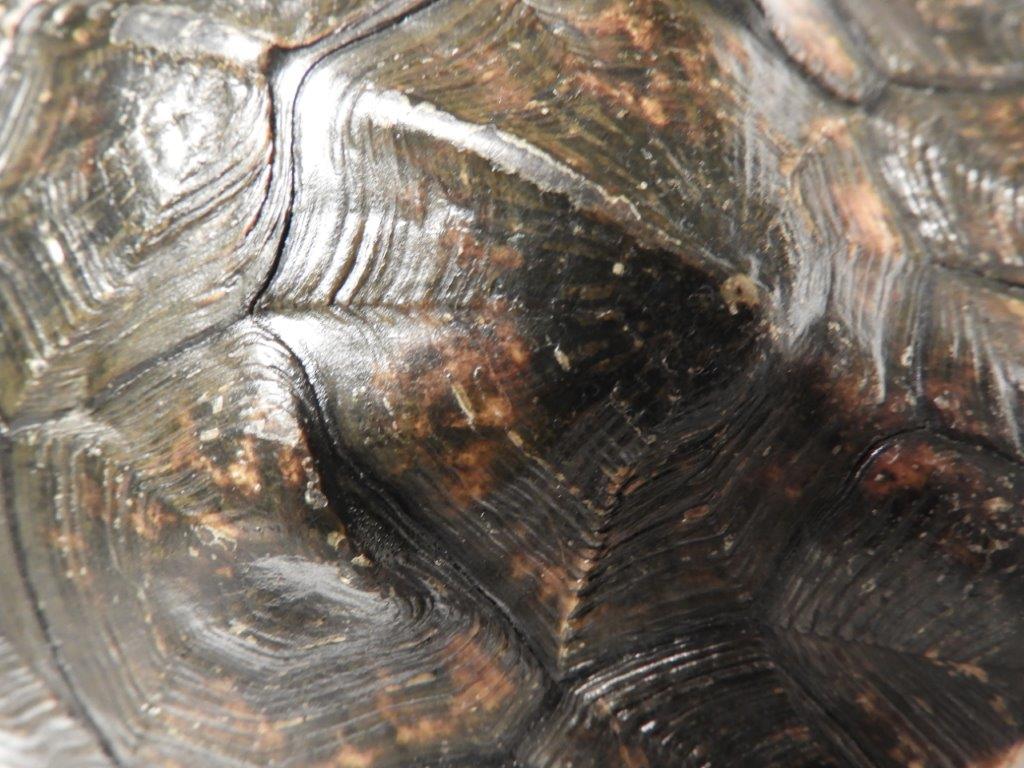
Mystery Photo answer: The photo shows the top (carapace) and bottom (plastron) of a wood turtle shell. The shell almost looks like it was carved of wood. Now that spring is here, you can spot wood turtles basking on logs absorbing heat from the sun. They spend their winter in the mud and muck of shallow streams, where the water does not freeze. In the spring and summer, they will feed on a variety of plants, and small invertebrates.
Week of April 7

Mystery Photo answer: The photo shows the pelt of a woodchuck. Now is the perfect time of year to spot woodchucks, also called groundhogs or whistle pigs! In spring these rodents come out of their elaborate burrows to find food and a mate after three or four long months of hibernation. During hibernation woodchucks’ hearts will beat 15 times per minute, and they will only breathe once every 5-6 minutes.
Week of March 30

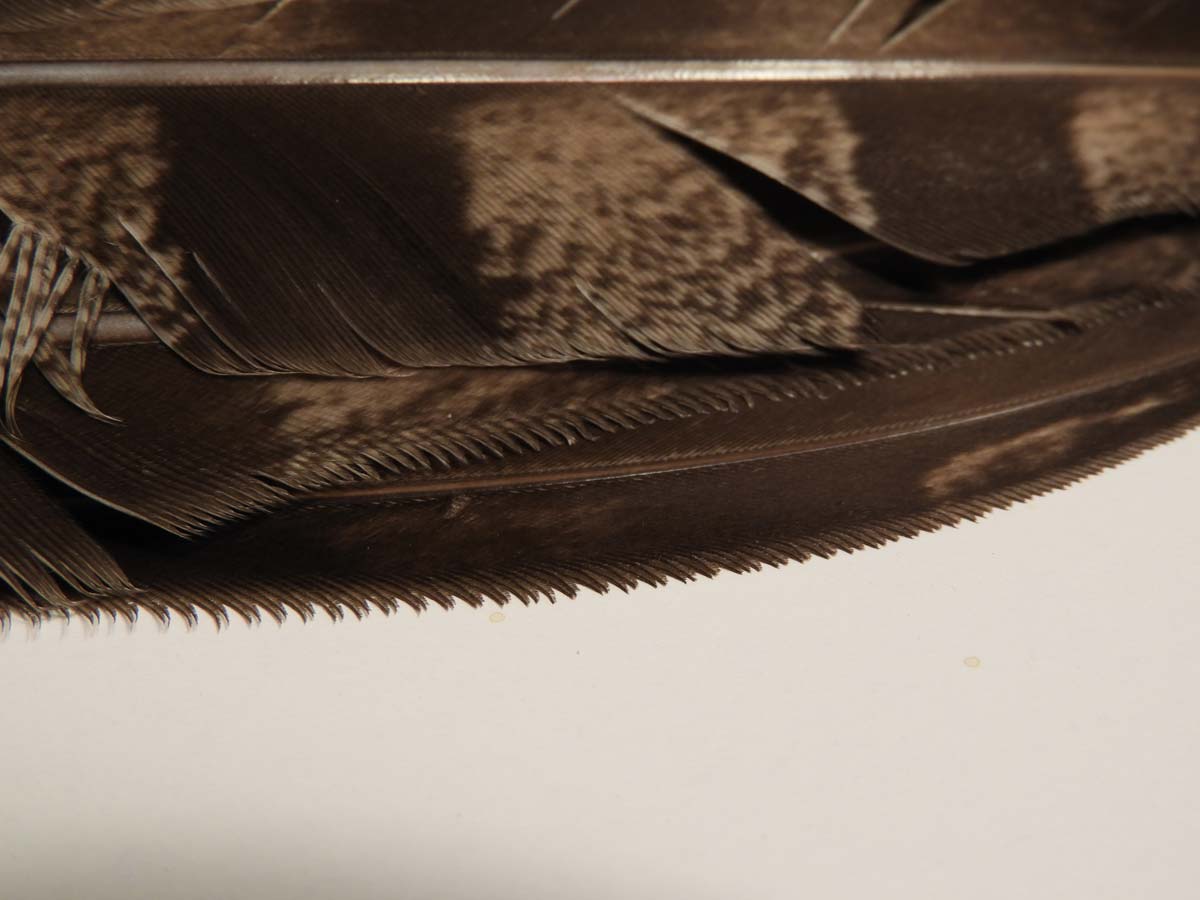
Mystery Photo answer: The photo show the feathers on the wing of a Great Horned Owl. The fringes on the feather’s edge are key identifiers. These fringes make those feathers “fluted” which allow air to pass by the wing making extremely quiet flight. All owls have quiet flight, which enables them to be great nighttime hunters. The Great Horned Owl sets itself apart with its strength. An adult Great Horned Owl has a grip strength on average ten times as strong as a person!
50 Nature Activities for Kids
These activities come from the Science Center's book 50 Nature Activities for Kids by Dave Erler. See details activities and view the full book using the button below.
Life Under Logs (see page 62)
Seeing wildlife up close is always an exciting experience. Too often though, with children in tow, the chance of catching more than a fleeting glimpse of larger wildlife is rare. One almost certain place to find smaller critters is under fallen logs. A host of invertebrates like millipedes, centipedes, sow bugs, spiders, beetles, and small vertebrates like red-backed salamanders or red efts find shelter under fallen branches and tree trunks. A small glass container and a hand lens can enhance the experience. It's fun to capture a few residents and observe them up close for a few minutes.
There are a couple of guidelines to looking under logs.
- 1 Always try to place the log back the way you found it, even it you didn't find anyone home when you looked.
- 2 After a few minutes of observing, release the captured critters where you found them. Release them next to the log rather than lifting the log and then inadvertently crushig the critters when you set the log back in place.
I never tire of looking under logs. The anticipation is a bit like opening a present to see what's inside.
Bark Rubbings (see page 8)
Sucking in a Bird (see page 100)
You are out on a walk. Out of the corner of your eye you spot a little bird flitting around in a thicket of shrubs. You can't see it but are curious to know what it is. Your options:
- 1 Wait patiently hoping that it might pop out.
- 2 Go crashing into the shrubs on the slight chance you may flush it out.
- 3 Forget about it and continue your walk.
- 4 Suck it out.
What do I mean by sucking it out?
It means to put your lips to the back of your hand and make a sucking sound. If you remain still and repeat the sucking sound every few seconds it might arouse the curiosity of the bird, drawing it in so you can get a good look. A similar technique is to make a shushing sound with your mouth and lips. The premise is the sounds resemble an animal in distress and the bird responds by trying to see what is the cause.
A couple of things you might want to note. It doesn't always work if the bird has been "sucked in" before by a number of birders. It's also not a good idea to try the sucking technique if the back of your hand is covered with mosquito repellent as you may find yourself doing a lot of grimacing and wiping your lips and tongue off in total disgust.
Bird Nesting Materials (see page 18)
Spring is the season of renewal. Birds sing to attract a mate and defend the territory around their nest. The nest that a bird makes protects, cushions, insulates, and holds the eggs together during incubation. A fun experiment you can try is to provide nesting materials to see what the birds in your yard might use to construct their nests.
Record the types of materials you put out and observe what the birds in your yard choose. The best time to conduct this experiment is mid-April through May.
Materials
- mesh produce bag, suet cage, or a square of hardware cloth to hold materials
- dead grass, feathers, human or animal hair
- moss
- dried weeds
- twigs
- strips of bark
- roots
- cotton fluff
Yarn, thread, and string are NOT recommended as the birds may get tangled in them.
Directions:
Weave the materials through the mesh of your holder. Attach the holder to a shrub, tree branch, or tree trunk where you can easily observe it.
Activities from Blue Heron School
"Oobleck"
Color Sorting
Bird Beaks
Animal Classes
Mother's Day Craft
Food Chains
Land and Water Forms
Patterns in Nature
Colors of Nature
Car Wash
Father's Day Craft

